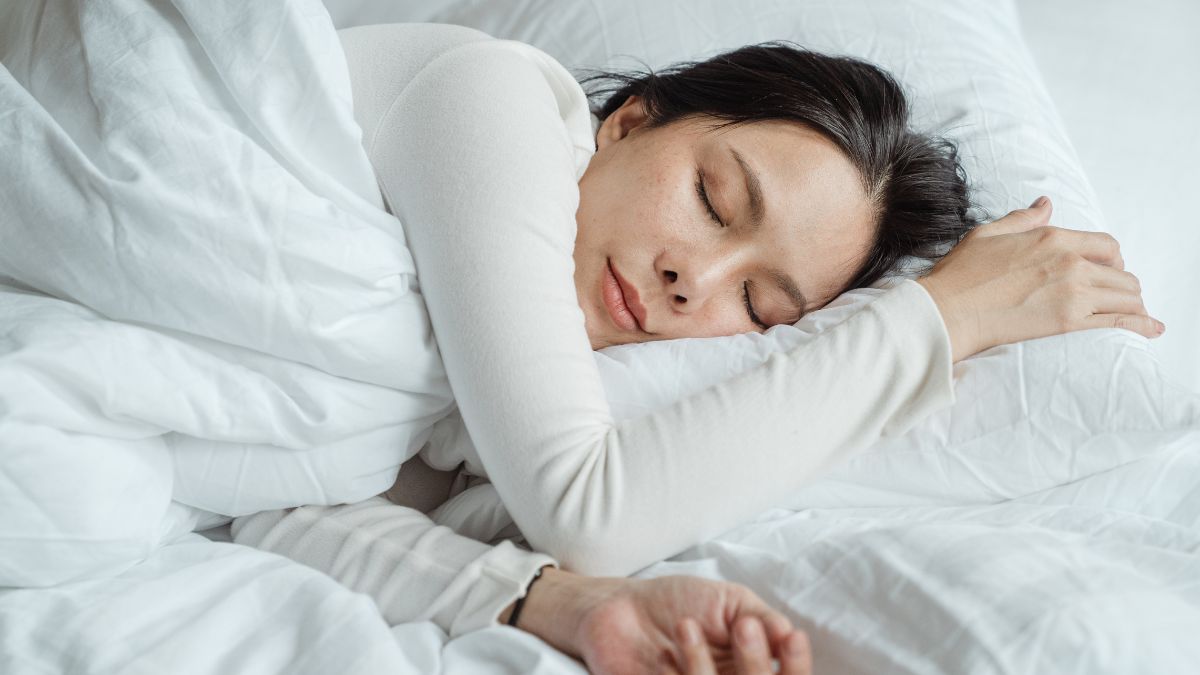Just In
- 6 hrs ago

- 6 hrs ago

- 10 hrs ago

- 17 hrs ago

Don't Miss
- Finance
 2:1 Bonus Issue: IT Penny Stock Turned; 1,600 Shares Market Lot Size Revised To 4,800 Shares
2:1 Bonus Issue: IT Penny Stock Turned; 1,600 Shares Market Lot Size Revised To 4,800 Shares - Movies
 Bigg Boss Malayalam 6 Voting Trends: Saranya, Sreerekha or Jaanmoni; Who Will Get Least Votes On Mohanlal’s Sh
Bigg Boss Malayalam 6 Voting Trends: Saranya, Sreerekha or Jaanmoni; Who Will Get Least Votes On Mohanlal’s Sh - Sports
 Manchester City vs Chelsea LIVE Streaming: Where to Watch FA Cup Semi-Final in India, UK, USA and Other Countries
Manchester City vs Chelsea LIVE Streaming: Where to Watch FA Cup Semi-Final in India, UK, USA and Other Countries - News
 Chinese President Xi Jinping Orders Biggest Military Reorganisation Since 2015
Chinese President Xi Jinping Orders Biggest Military Reorganisation Since 2015 - Education
 Exam Pressure Does Not Exist; Studying Punctually is Crucial; Says Aditi, the PSEB 2024 Topper
Exam Pressure Does Not Exist; Studying Punctually is Crucial; Says Aditi, the PSEB 2024 Topper - Automobiles
 Suzuki Swift Hatchback Scores 4 Star Safety Rating At JNCAP – ADAS, New Engine & More
Suzuki Swift Hatchback Scores 4 Star Safety Rating At JNCAP – ADAS, New Engine & More - Technology
 Dell Introduces AI-Powered Laptops and Mobile Workstations for Enterprises in India
Dell Introduces AI-Powered Laptops and Mobile Workstations for Enterprises in India - Travel
 Journey From Delhi To Ooty: Top Transport Options And Attractions
Journey From Delhi To Ooty: Top Transport Options And Attractions
World Sleep Day 2023: Breathing Techniques For Improved Sleep
World Sleep Day is observed every year on the Friday before the northern hemisphere vernal equinox, and this year (2023), the day falls on 17 March.
Organised by the World Sleep Day Committee of the World Sleep Society, formerly the World Association of Sleep Medicine, World Sleep Day was first observed in 2008.
The theme for World Sleep Day 2023 is "Sleep is Essential for Health."

The day is observed to celebrate the benefits of good and healthy sleep and raise awareness of the burden of sleep problems and the associated medical, educational and social aspects.
In the event of the world sleep day, let's take a look at breathing techniques for improved sleep.
Breathing Techniques For Improved Sleep
You need sleep in order for your brain to function properly and to maintain your physical health. In children and teens, sleep is crucial for growth and development. Insufficient sleep can result in chronic health problems [1].
Here are some effective breathing techniques for improving sleep.
1. Bhramari pranayama breathing exercise
The Bhramari pranayama reduces breathing and heart rate quickly, which is calming and can have a calming effect on the body [2].
- As you close your eyes, take a deep breath in and out.
- Put your hands over your ears.
- Put one index finger above each eyebrow and the rest of your fingers over your eyes.
- The next step is to apply gentle pressure to the sides of your nose and to the area between your eyebrows.
- Keeping your mouth closed, slowly exhale through your nose, making the sound of "Om".
- The process should be repeated five times.
2. Alternate nasal breathing exercise
Several studies have shown that people who practised nasal breathing exercises felt less stressed afterwards [3].
- Sit in a cross-legged position.
- Take your left hand and place it on your knee. Place your right thumb on your nose.
- Close the right nostril after you have exhaled fully.
- Take a deep breath through your left nostril.
- Exhale through your right nostril while closing your left.
- Exhale through your left nostril after completing the same for five minutes.

3. Buteyko breathing technique
The Buteyko breathing technique, named after the physician who developed it, can assist you in controlling your breathing. It is based on the idea that shallow breathing can lead to a host of health issues, and it helps to retrain the body to breathe more deeply and slowly.
The breathing technique helps to reduce stress and anxiety, improve sleep quality, and increase overall energy levels [4].
- For about 30 seconds, sit in bed with your mouth firmly closed (not pursed) and breathe naturally through your nose.
- Take a few deep breaths through your nose in and out once more.
- Pince your nose gently with your thumb and forefinger while keeping your mouth closed as well until you feel the need to breathe again.
- Close your mouth and take a deep breath by inhaling and exhaling through your nose.
4. 4-7-8 breathing technique
This technique was developed by Dr. Andrew Weil as a variation of pranayama, an ancient yoga technique that promotes relaxation while replenishing the body's oxygen supply [5].
- Gently part your lips.
- As you exhale, make a breathy whoosh sound.
- As you silently inhale through the nose for a count of four seconds, press your lips together.
- For a count of seven seconds, hold your breath.
- Take a deep breath and exhale for eight seconds, making a whooshing sound throughout.
- Initially, repeat four times.
- Over time, increase the number of repetitions to eight.

On A Final Note...
Although there are a number of breathing exercises you can try to relax and fall asleep, a few basic principles apply to all of them. The best way to relax is to close your eyes, as this may help you block distractions. You should concentrate on your breathing and consider how it is healing.
Slowing down your breathing can help to relax the body and the mind. When you focus on the feeling of air entering and leaving your body, it can help to create a more calming environment which may lead to deeper, more restful sleep.
-
 healthWorld Sleep Day 2024: Best Hacks For Sound Sleep That You Must Bookmark As They Will Ensure Overall Wellbeing
healthWorld Sleep Day 2024: Best Hacks For Sound Sleep That You Must Bookmark As They Will Ensure Overall Wellbeing -
 wellnessWorld Sleep Day 2023: 5 Drinks That Help You Sleep Better!
wellnessWorld Sleep Day 2023: 5 Drinks That Help You Sleep Better! -
 wellnessWorld Sleep Day: Sleep-Lovers, Rejoice! Here Are Some Surprising Benefits Of Getting More Sleep
wellnessWorld Sleep Day: Sleep-Lovers, Rejoice! Here Are Some Surprising Benefits Of Getting More Sleep -
 wellnessWorld Sleep Day 2022: People With These Medical Conditions May Benefit From Wearing A Sleep Eye Cover
wellnessWorld Sleep Day 2022: People With These Medical Conditions May Benefit From Wearing A Sleep Eye Cover -
 pulseHappy World Sleep Day 2022: Greetings, Quotes, Messages, Images and Wishes
pulseHappy World Sleep Day 2022: Greetings, Quotes, Messages, Images and Wishes -
 wellnessEffective Ways Sleep Can Help In Weight Loss
wellnessEffective Ways Sleep Can Help In Weight Loss -
 wellnessWhich Is The Best Time To Sleep And Wakeup?
wellnessWhich Is The Best Time To Sleep And Wakeup? -
 wellnessWorld Sleep Day 2020: Dos And Don'ts Of Napping For Healthy Adults
wellnessWorld Sleep Day 2020: Dos And Don'ts Of Napping For Healthy Adults -
 wellnessWorld Sleep Day 2020: Causes And Symptoms Of Sleep Deprivation
wellnessWorld Sleep Day 2020: Causes And Symptoms Of Sleep Deprivation -
 healthDoctor Explains How To Choose The Perfect Orthopedic Mattress To Ensure Spinal Health And Restful Sleep
healthDoctor Explains How To Choose The Perfect Orthopedic Mattress To Ensure Spinal Health And Restful Sleep -
 healthHere's How Often You Should Replace Your Mattress For The Best Quality Sleep
healthHere's How Often You Should Replace Your Mattress For The Best Quality Sleep -
 healthExclusive: Menopausal Symptoms Can Lead To Sleepless Nights For Women, 9 Expert-approved Remedies
healthExclusive: Menopausal Symptoms Can Lead To Sleepless Nights For Women, 9 Expert-approved Remedies


 Click it and Unblock the Notifications
Click it and Unblock the Notifications



